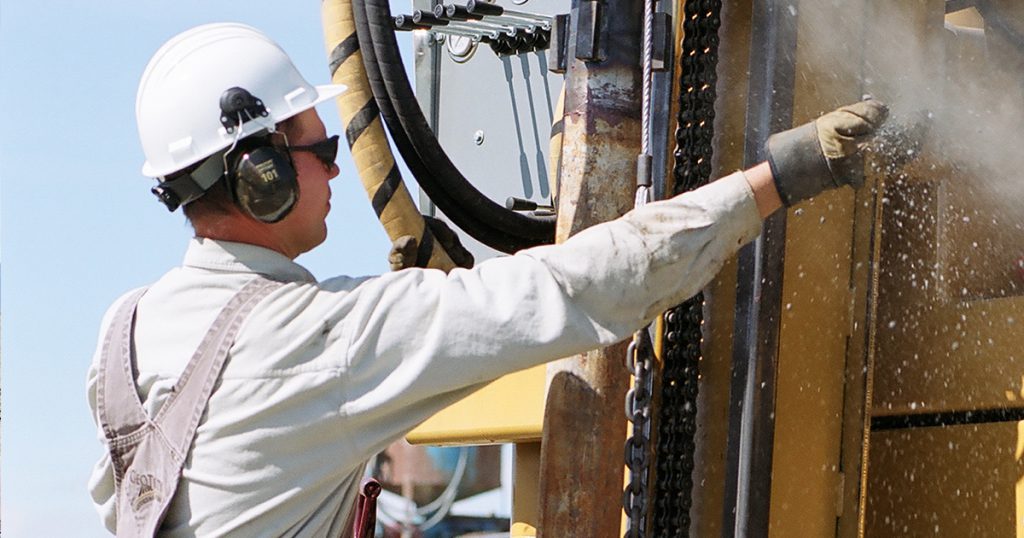This piece was originally published on CoPower.me. CoPower was acquired by Vancity Community Investment Bank on Nov 8, 2019. CoPower’s clean energy finance team has joined VCIB and continues to provide financing services that support impactful clean energy and energy efficiency projects like these.
We’re excited to announce CoPower’s largest project investment yet: a $6.4 million portfolio of residential geothermal heating and cooling projects in Kelowna, British Columbia.
Not only do these projects illustrate CoPower’s model of supporting an underserved segment of the project finance market, but they’re also an investment in the green communities of the future.
An investment in clean, green power from the ground
When it comes to saving energy and reducing emissions, geothermal is one of the most effective solutions available to homeowners.
The problem: it’s expensive. A single residential installation can cost as much as $30,000 to $50,000 upfront. So, despite excellent economics—most homeowners will save in the long-term—few can afford geoexchange and the industry grows slowly.
Terrasource and its parent company, GeoTility, have solved this problem by offering geothermal energy in a utility model. Rather than pay for equipment and installation up-front, homeowners can now pay a fixed quarterly bill for heating and cooling services. Terrasource designs, installs, operates and owns the exterior equipment–the ground heat exchanger–and, in essence, acts as a mini-utility for each individual home. If this sounds familiar, it should. This is similar to the model that enabled the explosive growth of residential rooftop solar across the United States by companies like SolarCity.
We’re proud of the role CoPower Financing is playing in making this innovative model possible. In lowering costs for homeowners, GeoTility is left footing the bill for these still expensive installations. CoPower has provided $6.4 million in refinancing for 658 operational GeoTility systems. This frees up GeoTility to take some of their equity out of existing projects, invest in their next projects and bring this impactful model to new markets.
“The transition to a high-efficiency, low carbon energy system will mean a shift to distributed clean energy projects like residential geothermal, but most traditional infrastructure lenders are still stuck on the old model of financing large-scale, centralized projects like a gas plant,” said Jim Leask, President and CEO of GeoTility. “It’s great to find a partner like CoPower that offers the kind of financing we need to transform our energy system.”

Drill, baby, drill (no, not for fossil fuels)
These particular projects use a type of geothermal technology called geoexchange. If you’re not familiar with geoexchange, here’s a quick primer. Depending on where you live in Canada the temperature outside may range from 30°C degrees during a summer heatwave to -30°C in winter, but just a few feet below the earth’s surface the temperature stays at a relatively consistent 6-12°C year round. Geoexchange technology captures that free energy and brings it inside.
It starts with drilling holes and inserting pipes in the ground that contain an eco-friendly heat transfer fluid. As the fluid circulates, it absorbs the heat from the ground and pumps it back up into the house using a ground source heat pump. In summer, when the air outside is hotter than the ground is cool, it works in reverse.

When clean energy is the default, it’s easier being green
Beyond being a great fit for CoPower financing, we were attracted to these projects for another environmental reason: they point the way to the low-carbon communities of the future.
Think about how quickly we need to fight climate change and decarbonize our economy–climate scientists say the building sector must essentially be zero-emissions within the next 30 years. Now compare that to the lifespan of a typical new building: 60 years. Every new building represents a crucially important choice.
GeoTility focuses on partnering with the developers of planned communities. Some of these communities offer the choice between gas and geothermal to new homeowners, better yet, others just install geothermal as the default. The Wilden development in Kelowna is a great example of a community that is aiming to go green from the start. In addition to offering geothermal services via GeoTility, they also promote innovative insulation, smart thermostats, efficient appliances and advanced framing and air tightness techniques.

Geotility at work. Photo credit: TerrasourceIncredibly, according to numbers provided by GeoTility, these systems operate at 300-500% efficiency, providing long-term energy savings. And by eliminating the use of fossil fuels, on average, each geothermal installation allows homeowners to lower their heating and cooling carbon emissions by 99%. As for the remaining 1%, it still requires some electricity to power the groundsource heat pump, but since British Columbia’s electricity grid is low-carbon these emissions are negligible.
In total, this portfolio of 658 projects is expected to avoid over 3,273 tonnes of CO2e annually. In real-life terms, that’s the equivalent of each homeowner getting rid of their own car and their neighbour’s.
Financing for the low carbon transition
Despite the clear financial, social and environmental benefits, individual projects of this size are often too small to attract financing from traditional lenders like banks and pension funds.
At the same time, they offer huge impact potential and so that’s where we focus our lending efforts. In addition to geothermal in both BC and Quebec, our loan portfolio includes energy efficiency projects like LED retrofits in condo buildings across Ontario, BC and Alberta, as well as rooftop and ground-mount solar in Ontario. These projects generate steady revenues from the sale of clean energy or in this case energy savings that support fixed loan repayments to CoPower.
Learn more about how CoPower and VCIB can help you finance your next clean energy or energy efficiency projects.
—
The information provided herein is intended for informational purposes only and is not intended to constitute investment, financial, legal, accounting, tax, or other advice and should not be relied upon for such purpose. Always consult a professional regarding your specific needs and circumstances.



